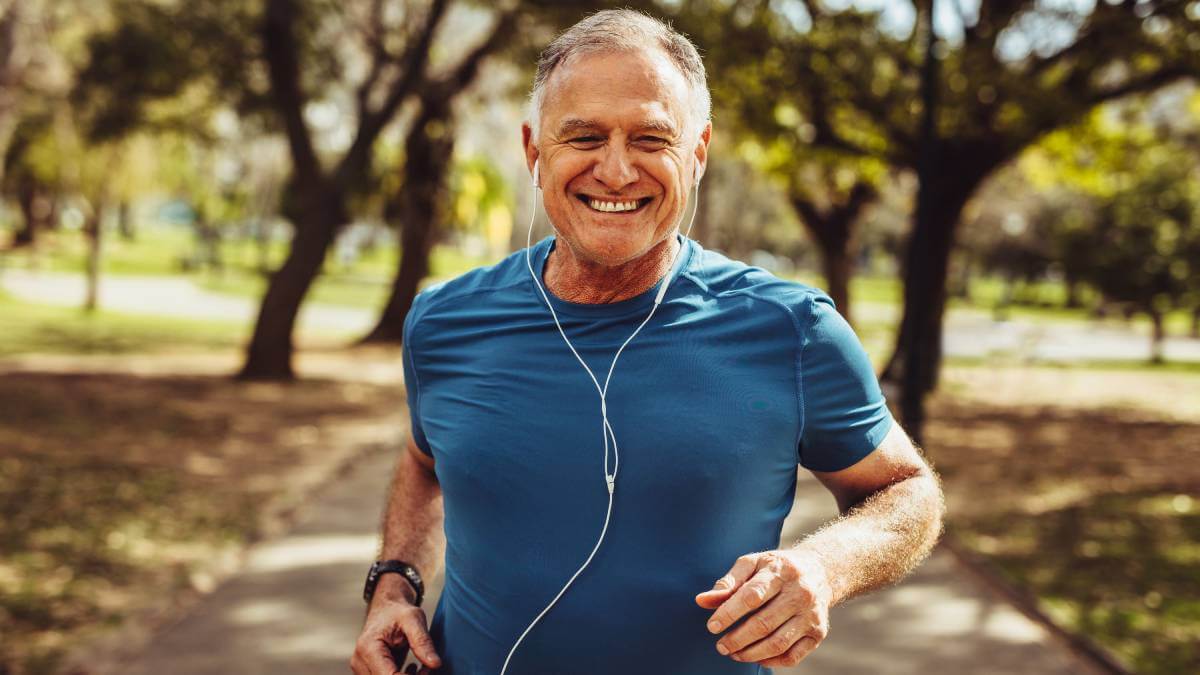As we age, increasingly, barriers can stand in the way of us being able to run, jump, skip or dance like we used to, but the benefits of staying active in older age shouldn’t be ignored.
We asked Lin Seeley, wellbeing coordinator at Bupa Sandhills Court care home (bupa.co.uk), to explain why exercise is so important to older people, and how much we should be doing aged 50 and beyond.

“As people get older they tend to become less active. One study suggests that, on average, over 65s are the most sedentary age group – spending upwards of 10 hours a day either sitting or lying down.
“I’ve spent my career working with older people and know that keeping active as we age has a big impact on overall mental and physical health.
“Perhaps most obviously, exercise can help us maintain a healthy weight. Being overweight or obese can have a detrimental impact on many areas of our health, increasing the risk of heart problems, type 2 diabetes and certain cancers. Likewise, it reduces lethargy and means we can get on with the activities we enjoy.
“It’s not just about keeping the weight off either, as regular exercise helps us keep healthy muscles. As we get older it becomes harder for our bodies to maintain muscle, but exercise can combat this, improving our strength and balance so we can continue to lead the independent life we’re used to.
“With this in mind, it’s not surprising to see a link between exercise and good mental health, as we’re able to keep up things such as hobbies, social commitments, or even playing with the grandchildren. Likewise, it can have an impact on our confidence and self-esteem. This is thought to be one of the reasons active people have a reduced risk of suffering from depression.”
How much physical activity you should do
Health.gov.au recommend that adults should be active most days, preferably every day. Each week, adults up to the age of 64 should do either:
- 2.5 to 5 hours of moderate intensity physical activity – such as a brisk walk, golf, mowing the lawn or swimming
- 1.25 to 2.5 hours of vigorous intensity physical activity – such as jogging, aerobics, fast cycling, soccer or netball
- an equivalent combination of moderate and vigorous activities.
Include muscle-strengthening activities as part of your daily physical activity on at least two days each week. This can be:
- push-ups
- pull-ups
- squats or lunges
- lifting weights
- household tasks that involve lifting, carrying or digging.
Doing any physical activity is better than doing none. If you do no physical activity right now, start by doing some, then slowly build up to the recommended amount.
Health.gov.au recommends people aged 65 years and over do at least 30 minutes of moderate intensity physical activity on most, preferably all, days.
If you find 30 minutes difficult right now, start with just 10 minutes once or twice a day. After two weeks, increase to 15 minutes twice a day. If you can do more than 30 minutes, you will get extra benefits.
Over the course of the week, try to incorporate different types of activities. Try to reduce the time you spend sitting down – break that time up as often as you can.
View this post on Instagram@CrossFit1939 #Crossfit #Coolestlittleboxinbrooklyn #fitnessaddict #fitspiration
“Clearly this doesn’t have to be weightlifting or marathon training, but it does need to be something that raises your heart rate. Activities such as a brisk walk or bike ride should work, but you can also see an impact from things such as pushing the lawnmower – or even the vacuum cleaner, if you’re vigorous enough,” says Ms Seeley.
“Again though, it’s important not only to focus on cardio but also building and maintaining muscle. While weight training and Pilates can be good for this, household tasks involving heavy lifting – such as big gardening projects – can also help. Varying our exercises is also important as it works different muscle groups.”
Do what’s right for you
“The most important thing to remember though is to do what’s right for you. Exercise in your 50s is going to be very different to that in your 70s and 80s.

“Adapt what you do as you age. If you don’t have the strength or balance you used to, there are other ways of staying active. For example, in our care homes, activities like armchair yoga or slow dancing are really popular, and help keep people happy and healthy,” says Ms Seeley.
“Likewise, it’s important to keep you brain active – which is why I recommend things like puzzles, crosswords and quizzes, to keep people both mentally and physically sharp in their older years.”
How much exercise do you do? Has the amount of exercise you do changed in the past few years? Let us know in the comments section below.
Also read: This is how exercise can boost your brain power
– With PA


I am 70. I run 6 days a week, anywhere from 5 to 10 km.
I also do most of the housework, grocery shopping and gardening.